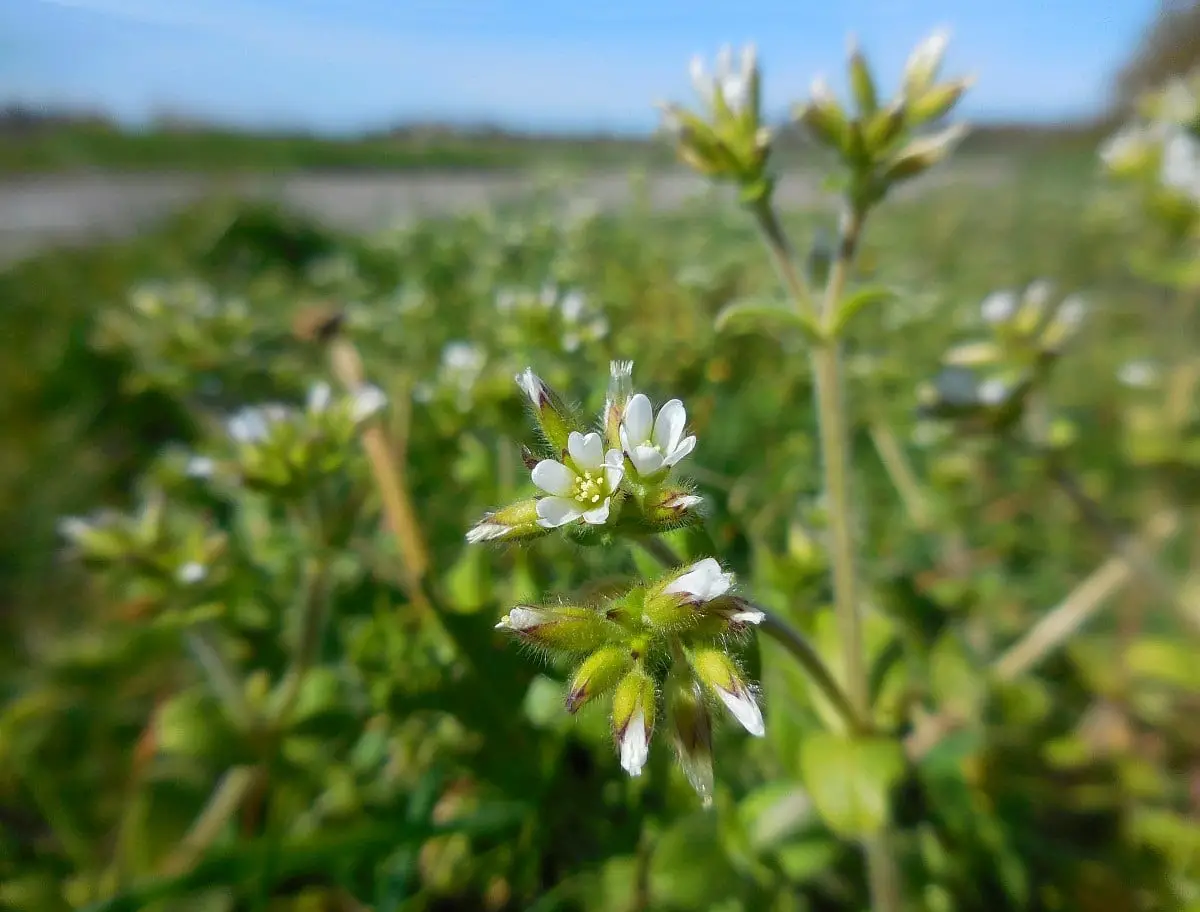
The Cerastium clusteredalso called Mouse ear or Cerastioit is a species that is part of the Caryophyllaceae family; it has managed to spread globally, even acquiring the status of cosmopolitan. Do you know this plant? Do you want to learn more about it? Then read on and find out everything about her.
Her CARACTERISTICS

Within the family made up of Caryophyllaceae, It is made up of about 200 plants perennials, herbaceous or annuals of different species from Europe. We can point out that among the species of that genus are, among others, those mentioned below: Cerastium tomentosum, Cerastium brachypetalum, Cerastium biebersteinii, Cerastium azoricum and of course, Cerastium clusteredon which we will be focusing.
It is just as convenient to mention that this plant is usually also known as Mantle of the bride, summer snow and silver basket. That said, it is time to highlight that it is a really interesting evergreen plant due to its creeping bearing given that both its foliage and its flowering have a height of less than 20cm.
Likewise, it consists of an annual plant with upright stems They can be both light green and yellowish in color, they are branched and have a tomentose clothing.
Its leaves, which stand out for being opposite, have a shape that can be between oblanceolate and spatulate; and the lower ones are distinguished by being petiolatedwhile the upper ones are velvety and thick, with a shape similar to the ear of a mouse (which is why they take their popular name) and both are arranged perpendicular to the stem.
Its inflorescence is usually dense, rarely lax and is in the form of glomerular ridges and in certain cases it is common for its flowers to fail to fully open. Its bracts are hairy and also herbaceous.
For their part, their pedicels are generally shorter compared to the sepals, and it is not very common for them to be longer than 1,5; while their sepals are usually lanceolate, it should be noted that the outermost are totally herbaceous and they present both glandular and eglandular hairs; the latter usually exceed the petals and have a reddish tip.
When they sprout, their petals are usually low-cut with great force and, in general, they have a ciliated base. Its androecium has 10 stamensand its filaments are distinguished by being glabrous. Finally, its fruits have the shape of a capsule that can be both curved and straight and how many with 10 revolving teeth; while its seeds are usually tuberculate and obpyramidal, having a reddish brown tone.
Habitat and Distribution Cerastium clustered
Being a ruderal, arvense and road species, Cerastium clustered It usually inhabits ditches, slopes, roadsides, vacant lots, walls, crops and temporarily flooded meadows, among other places.

It accepts any type of soils, although in general, it prefers nitrified ones, which are found in areas located between sea level and an altitude of approximately 2.000 meters. Similarly, It should be noted that it is distributed throughout Europe.
Care
The Cerastium clustered is characterized by being a simple growing plantwhich requires constant exposure to sunlight and has the ability to withstand both cold weather and frost without problems.
It is not usually at all demanding in terms of the ground, so even, it can develop very well when being within calcareous, dry and poor lands. Its planting has to be carried out throughout the spring or during the fall, making sure to plant four copies of it for every square meter.
Although it has a great resistance against periods of drought, the truth is that it is grateful to receive a good watering every week throughout the summer. Similarly, although it does not require the use of special fertilizers, it is necessary to prune it occasionallyat any time of the year, in order to keep its invasive growth under control and thus be able to avoid the appearance of bald spots.
In the same way, do not forget to mention that 00 stands out for being a plant resistant to common pests and diseasesAlthough watering them excessively could cause their roots to end up rotting. It is possible to multiply it very easily through the use of its seedswhich will have to be sown during spring or, failing that, do it at the beginning of autumn using cuttings that must be planted in a definitive place.
Uses of this widespread plant

The juice of the Cerastium clustered used to be used as a pain reliever for the purpose not only of relieve headaches, but also heal and stop bleeding nasal. In the same way, it is usually used in rockeries, as an ornamental plant in planters and / or pots, in order to cover both slopes and slopes and even to replace the grass in areas that are dry.
This consists of a very widespread plant globally due to its appearanceease of cultivation and uses, Would you like to use it to decorate your garden? Let us know what you think of this post.

